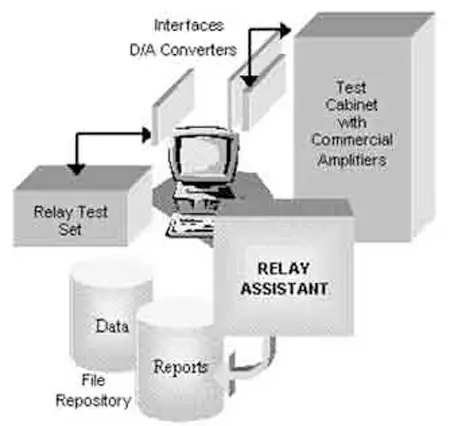Increasingly Complex Protective Relays - Explained

Power industry deregulation trends and proliferation of digital electronic devices are deeply affecting the operations of power utility companies. Engineering departments, in particular, must deal with the increasing complexity of existing applications as well as with the emergence of new applications. Such an environment creates many new challenges for protection system engineers. Use of new business models, deployment of microprocessor relays, proliferation of intelligent devices, higher emphasis on power quality, and a shortage of personnel are among the main ones. As a result, engineers increasingly must rely on the use of advanced engineering tools to perform their daily tasks. This paper describes several such tools developed at Texas A&M University’s Power System Control and Protection Laboratory.
BACKGROUND
Over the past years, research and development of digital simulators for relay testing has resulted in the development of several configurations, among them a (customized) closed-loop simulator, and an advanced low-cost relay-test bench. The main characteristics of these tools are hardware flexibility, automation of tasks, user-friendly GUI and simple integration with other applications.
Initial research in the area of automated fault analysis resulted in an expert system. After successful off-line testing, the system was installed in a substation of Reliant Energy HL&P transmission system where it has been working since 1995. Subsequently, a new generation of the system was developed to deal with multiple digital fault recorders and to facilitate data archiving. A GUI was also added to streamline system setup and visualization of the results, Kezunovic, et al. The latest generation of the system was developed to address a need to integrate data analysis, archival and dissemination across the whole system.
The modeling and simulation of the protection system and its components is the latest tool that was added to our protection engineer’s suite. It allows protection engineers to configure their applications in a very simple and efficient way by using the models of power system and relaying system components. The components are pre-defined and are available in libraries. They can also be enhanced by adding customized components developed by the users. This allows for modeling and simulation of complex power system and protective relaying scenarios including multi-terminal and multi-relay applications. The environment is very flexible and supports interfacing to outside software packages.
PC-BASED RELAY TEST BENCH
Typically, relay testing is performed using phasor-based methods and conventional test sets. Due to its low cost and simplicity, this method especially suits routine testing aimed at verifying relay settings. However, some engineering tasks may require a more thorough relay evaluation based on transient testing (e.g. selecting a relay for a specific application, verifying the design of a new relay and analyzing the relay misoperations).
To meet the new needs, a variety of digital simulators has been developed. The closed-loop simulator provides very realistic test conditions, but most users cannot afford such a sophisticated tool. An alternative for them is an open-loop simulator, which performs transient testing using test signals simulated/recorded in advance. Many designs have been proposed, but most fail to find the balance between functionality and the cost. A solution that offers such a balance is described here.
REQUIREMENTS
The first set of design requirements aims at minimizing cost and overcoming the limits of existing simulators:
- Simulator computer should be a personal computer (PC) due to its popularity, price and performances.
- Simulator hardware should be interchangeable, and the use of existing test sets is promoted.
- System software should be commercially available and should not require substantial investment.
- Application software should support horizontal and vertical portability across different platforms.
AUTOMATED FAULT ANALYSIS
Automated fault analysis can facilitate assessment of the fault clearing and location, thereby enabling timely and appropriate restorative action. Such solutions could provide a detailed system-wide analysis within seconds following occurrence of an event. SCADA systems cannot offer such functions since they lack detailed data on transient waveforms and contact changes. However, thanks to expanding use of Intelligent Electronic Devices (IEDs) such systems can be built utilizing high-speed data communications and advanced software approaches. After the idea of automated fault analysis was originated in mideighties, a number of solutions were proposed. To the best of our knowledge, system presented here is one of the few to offer fully automated operation mode.
From: Electrical Relays, Protection & Control Handbook, Vol 5, The Electricity Forum
On-Site Training
Interested in cost effective, professional on-site electrical training?
We can present an Electrical Training Course to your electrical engineering and maintenance staff, on your premises, tailored to your specific equipment and requirements. Click on the link below to request a Free quotation.
EF PARTNER MEDIA
Product Showcases
Shared Media
















